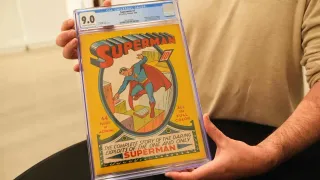
Nov 24
Pentagon Says It's Investigating Sen. Mark Kelly Over Video Urging Troops to Defy 'Illegal Orders'
Konstantin Toropin READ TIME: 3 MIN.
The Pentagon announced Monday it is investigating Democratic Sen. Mark Kelly of Arizona over possible breaches of military law after the former Navy pilot joined a handful of other lawmakers in a video that called for troops to defy "illegal orders."
The Pentagon’s statement, posted on social media, cited a federal law that allows retired service members to be recalled to active duty on orders of the defense secretary for possible court martial or other measures.
It is extraordinary for the Pentagon, which until President Donald Trump's second term had usually gone out of its way to act and appear apolitical, to directly threaten a sitting member of Congress with investigation. It comes after Trump ramped up the rhetoric by accusing the lawmakers of sedition “punishable by DEATH” in a social media post days after the video was released last week.
In its statement Monday, the Pentagon suggested that Kelly’s statements in the video interfered with the “loyalty, morale, or good order and discipline of the armed forces” by citing the federal law that prohibits such actions.
“A thorough review of these allegations has been initiated to determine further actions, which may include recall to active duty for court-martial proceedings or administrative measures,” the statement said.
Kelly said he upheld his oath to the Constitution and dismissed the Pentagon investigation as the work of “bullies.”
“If this is meant to intimidate me and other members of Congress from doing our jobs and holding this administration accountable, it won’t work,” Kelly said in a statement.
In the video, Kelly was one of six Democratic lawmakers who have served in the military or intelligence community to speak “directly to members of the military.” The other lawmakers are Sen. Elissa Slotkin and Reps. Jason Crow, Chris Deluzio, Maggie Goodlander and Chrissy Houlahan, who are seen as possible future aspirants for higher office and elevated their political profiles with the video's wide exposure.
Kelly, who was a fighter pilot before becoming an astronaut and then retiring at the rank of captain, told troops that “you can refuse illegal orders,” while other lawmakers in the video said they needed troops to “stand up for our laws ... our Constitution.”
Defense Secretary Pete Hegseth said Kelly was facing investigation because he is the only one of the lawmakers who formally retired from the military and is still under the Pentagon’s jurisdiction.
“Kelly’s conduct brings discredit upon the armed forces and will be addressed appropriately," Hegseth said on his personal X account. Of the wider group, he added that “their foolish screed sows doubt and confusion — which only puts our warriors in danger.”
Other Senate Democrats came to Kelly’s defense, with Democratic leader Chuck Schumer accusing Trump of using the Pentagon “as his personal attack dog” and saying “this is what dictators do."
His fellow Democratic Arizona senator, Ruben Gallego, said “Mark told the truth — in America, we swear an oath to the Constitution, not wannabe kings.”
Kelly and the other lawmakers didn’t mention specific circumstances in the video, but its release comes as the Trump administration has ordered the military to blow up small boats in the Caribbean Sea and eastern Pacific Ocean accused of ferrying drugs and continues its attempts at deploying National Guard troops into U.S. cities despite some legal setbacks.
Chief Pentagon spokesman Sean Parnell said last week that “our military follows orders, and our civilians give legal orders."
Troops, especially uniformed commanders, do have specific obligations to reject orders that are unlawful, if they make that determination.
While commanders have military lawyers on their staffs to consult with in making such a determination, rank-and-file troops who are tasked with carrying out those orders are rarely in a similar position and often have to rely on their superiors.
Broad legal precedence also holds that just following orders — colloquially known as the “Nuremberg defense,” as it was used unsuccessfully by senior Nazi officials to justify their actions under Adolf Hitler — doesn’t absolve troops.
Yet, there has been little reaction online from troops to the lawmakers' video.
A former service member who helps run an online military forum and spoke on condition of anonymity to avoid retaliation said the lawmakers’ message is unlikely even to reach troops because the video was posted only on X and was far too long to be reposted on platforms like TikTok where troops actually consume information.






